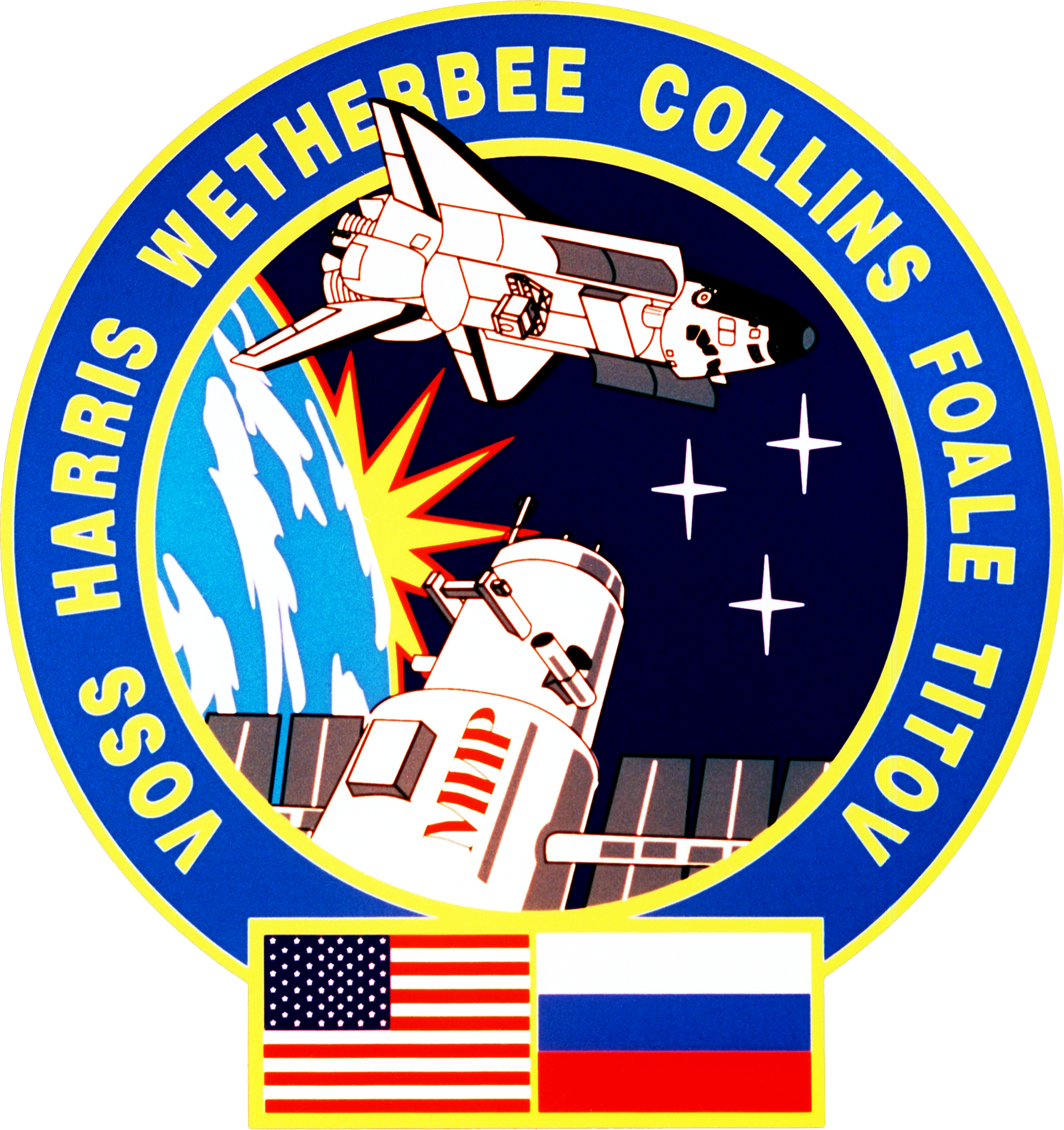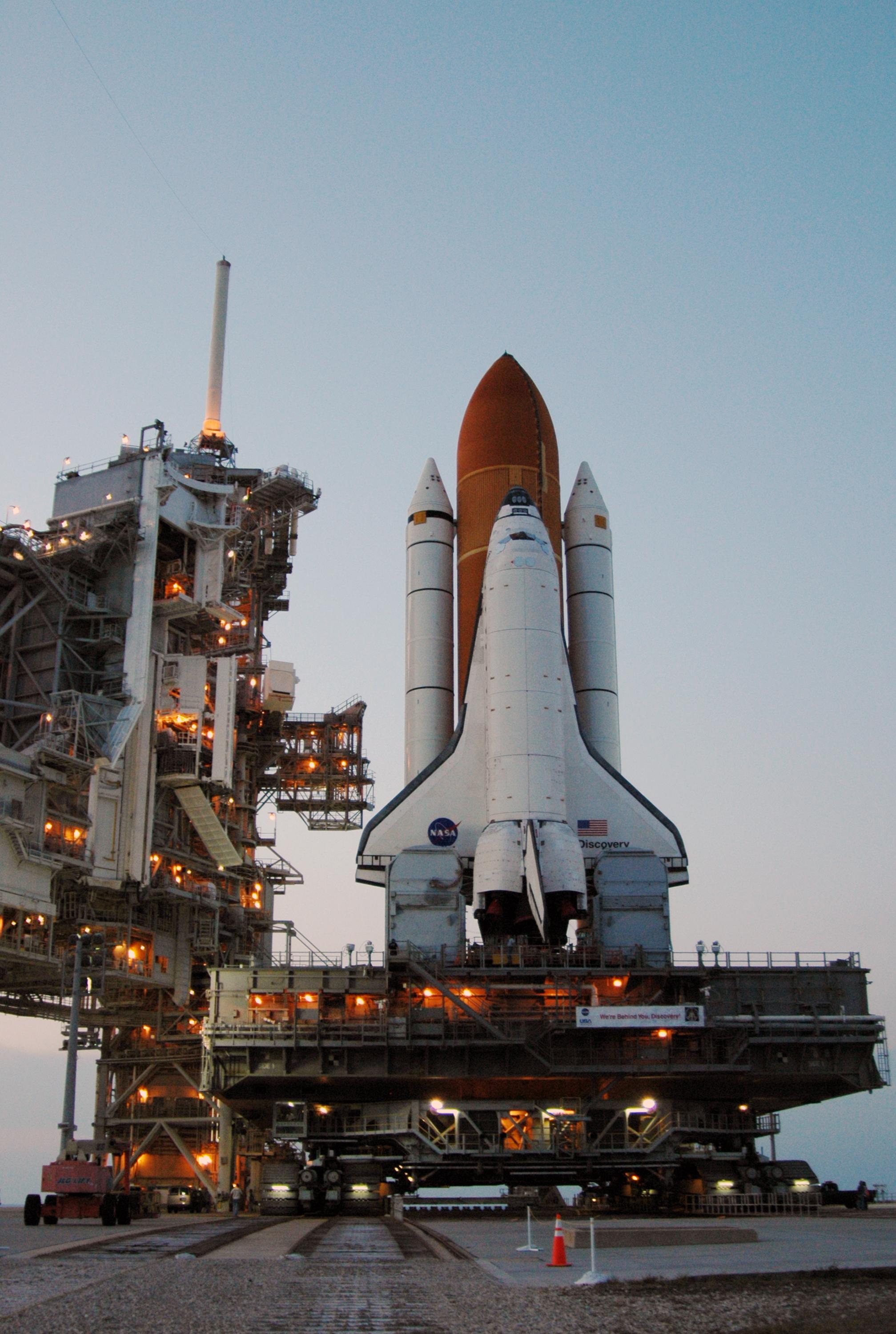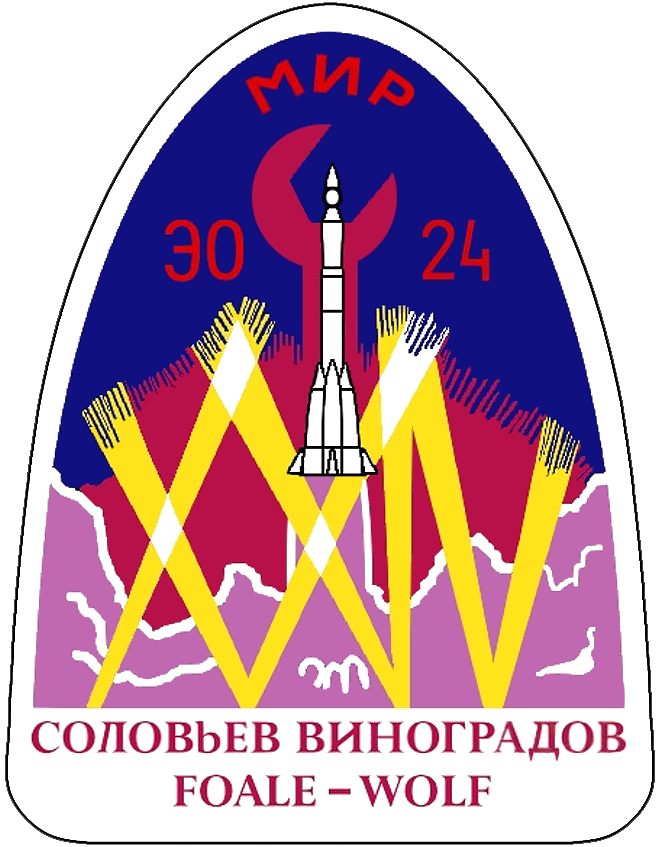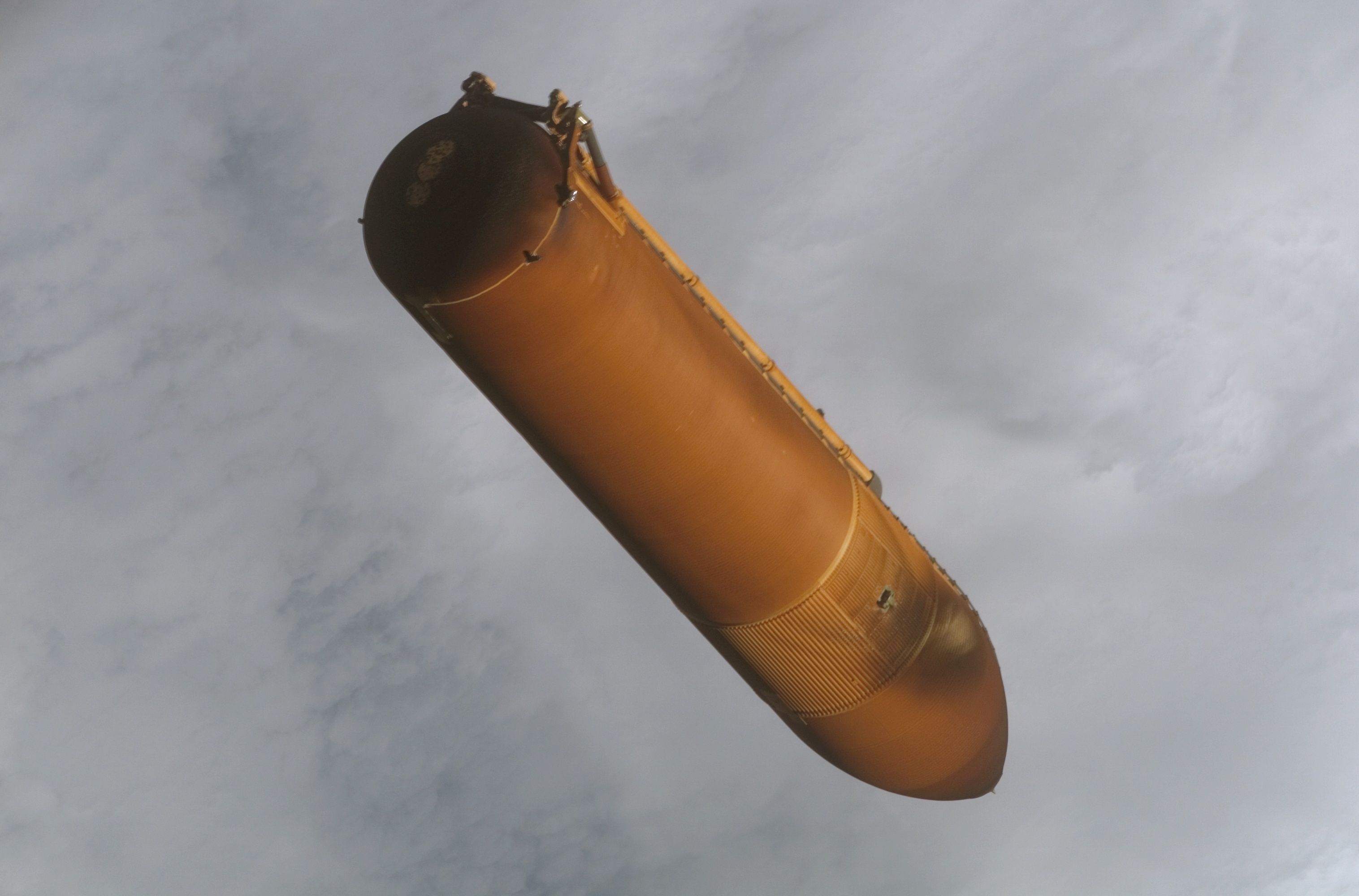|
STS-114
STS-114 was the first "Return to Flight" Space Shuttle mission following the Space Shuttle Columbia disaster, Space Shuttle ''Columbia'' disaster. Space Shuttle Discovery, ''Discovery'' launched at 10:39 Eastern Time Zone, EDT (14:39 Coordinated Universal Time, UTC), July 26, 2005. The launch, 907 days (approx. 29 months) after the loss of ''Columbia'', was approved despite unresolved fuel sensor anomalies in the Space Shuttle external tank, external tank that had prevented the shuttle from launching on July 13, its originally scheduled date. The mission ended on August 9, 2005, when ''Discovery'' landed at Edwards Air Force Base in California. Poor weather over the Kennedy Space Center in Florida hampered the shuttle from using its primary landing site. Analysis of the launch footage showed debris separating from the external tank during ascent; this was of particular concern because it was the issue that had set off the ''Columbia'' disaster. As a result, NASA decided on July ... [...More Info...] [...Related Items...] OR: [Wikipedia] [Google] [Baidu] |
Soichi Noguchi
is a Japanese aeronautical engineer and former JAXA astronaut. His first spaceflight was as a Mission Specialist aboard STS-114 on 26 July 2005 for NASA's first "return to flight" Space Shuttle mission after the ''Columbia'' disaster. He was also in space as part of the Soyuz TMA-17 crew and Expedition 22 to the International Space Station (ISS), returning to Earth on 2 June 2010. He is the sixth Japanese astronaut to fly in space, the fifth to fly on the Space Shuttle, and the first to fly on Crew Dragon. His third flight was on board the Dragon 2 capsule for the SpaceX Crew-1 mission which launched successfully on 15 November 2020 and landed on 2 May 2021. This makes him the third astronaut to fly on three different launch systems. He became a part-time lecturer at the graduate school of the University of Tokyo since 2011, a project professor since 2021. he is a project professor at the Department of Aerospace Engineering, Nihon University. He retired from astronaut dut ... [...More Info...] [...Related Items...] OR: [Wikipedia] [Google] [Baidu] |
Eileen Collins
Eileen Marie Collins (born 19 November 1956) is a retired NASA astronaut and United States Air Force (USAF) colonel. A former flight instructor and test pilot, Collins was the first woman to pilot the Space Shuttle and the first to command a Space Shuttle mission. A graduate of Corning Community College, where she earned an associate degree in mathematics in 1976, and Syracuse University, where she graduated with a bachelor of arts degree in mathematics and economics in 1978, Collins was commissioned as an officer in the USAF through Syracuse's Air Force Reserve Officer Training Corps program. She was one of four women chosen for Undergraduate Pilot Training at Vance Air Force Base, Oklahoma. After earning her pilot wings, she stayed on at Vance for three years as a T-38 Talon instructor pilot before transitioning to the C-141 Starlifter at Travis Air Force Base, California. During the American invasion of Grenada in October 1983, her aircraft flew troops of the 82nd Airbor ... [...More Info...] [...Related Items...] OR: [Wikipedia] [Google] [Baidu] |
STS-121
STS-121 was a 2006 NASA Space Shuttle mission to the International Space Station (ISS) flown by . The main purposes of the mission were to test new safety and repair techniques introduced following the ''Columbia'' disaster of February 2003 as well as to deliver supplies, equipment and German European Space Agency (ESA) astronaut Thomas Reiter to the ISS."STS-121 Nasa Press Kit" NASA Press Kit – STS-121, May 2006. After two weather-related delays, the shuttle successfully launched on Tuesday, 4 July 2006 at 14:37:55 EDT. It was the first and only shuttle launch on the United States' Independence Day. The mission lasted for 13 days before la ... [...More Info...] [...Related Items...] OR: [Wikipedia] [Google] [Baidu] |
Space Shuttle Columbia Disaster
The Space Shuttle ''Columbia'' disaster was a fatal accident in the United States space program that occurred on February 1, 2003. During the STS-107 mission, Space Shuttle ''Columbia'' disintegrated as it reentered the atmosphere over Texas, killing all seven astronauts on board. The mission was the second that ended in disaster in the Space Shuttle program after the loss of ''Challenger'' and all seven crew members during ascent in 1986. During the STS-107 launch, a piece of the insulative foam broke off from the Space Shuttle external tank and struck the thermal protection system tiles on the orbiter's left wing. Similar foam shedding had occurred during previous Space Shuttle launches, causing damage that ranged from minor to near-catastrophic, but some engineers suspected that the damage to ''Columbia'' was more serious. Before reentry, NASA managers had limited the investigation, reasoning that the crew could not have fixed the problem if it had been confirmed. When ' ... [...More Info...] [...Related Items...] OR: [Wikipedia] [Google] [Baidu] |
Stephen Robinson
Stephen Kern Robinson (born October 26, 1955) is an American former NASA astronaut. Education He was active in the Boy Scouts of America, where he achieved its second-highest rank, Life Scout. Robinson graduated from Campolindo High School, Moraga, California, in 1973, and obtained a Bachelor of Science degree in mechanical and aeronautical engineering from the University of California, Davis, in 1978, a Master of Science degree in Mechanical Engineering from Stanford University in 1985; and a doctorate in mechanical engineering, with a minor in aeronautics and astronautics from Stanford University in 1990. Organizations Robinson is a member of the American Institute of Aeronautics and Astronautics, the Aerospace Medical Association, and the Experimental Aircraft Association. Awards and honors He was awarded the NASA Ames Honor Award for Scientists in 1989, the American Institute of Aeronautics and Astronautics Outstanding Technical paper Award for Applied Aerodynamics ... [...More Info...] [...Related Items...] OR: [Wikipedia] [Google] [Baidu] |
Rendezvous Pitch Maneuver
The R-bar pitch maneuver (RPM), popularly called the rendezvous pitch maneuver or backflip, was a maneuver performed by the Space Shuttle as it rendezvoused with the International Space Station (ISS) prior to docking. The Shuttle performed a backflip that exposed its heat-shield to the crew of the ISS that made photographs of it. Based on the information gathered during the rendezvous pitch maneuver, the mission team could decide that the orbiter was not safe for re-entry. They may have then decided either to wait on the ISS for a rescue mission or attempt extra-vehicular activity to repair the heat shield and secure the safe re-entry of the orbiter. This was a standard procedure recommended by CAIB for all space shuttles docking to the International Space Station after a damaged heat shield caused the ''Columbia'' disaster. Maneuver description The name of the maneuver was based on the R-bar and V-bar lines that are used in the approach of the space station. R-bar or Eart ... [...More Info...] [...Related Items...] OR: [Wikipedia] [Google] [Baidu] |
Space Shuttle Program
The Space Shuttle program was the fourth human spaceflight program carried out by the U.S. National Aeronautics and Space Administration (NASA), which accomplished routine transportation for Earth-to-orbit crew and cargo from 1981 to 2011. Its official name, Space Transportation System (STS), was taken from a 1969 plan for Space Transportation System, a system of reusable spacecraft of which it was the only item funded for development. It flew 135 missions and carried 355 astronauts from 16 countries, many on multiple trips. The Space Shuttle—composed of an Space Shuttle orbiter, orbiter launched with two reusable Space Shuttle Solid Rocket Booster, solid rocket boosters and a disposable Space Shuttle external tank, external fuel tank—carried up to eight astronauts and up to of Payload (air and space craft), payload into low Earth orbit (LEO). When its mission was complete, the orbiter would atmospheric reentry, reenter the Earth's atmosphere and land like a glider (aircr ... [...More Info...] [...Related Items...] OR: [Wikipedia] [Google] [Baidu] |
Charles Camarda
Charles Joseph "Charlie" Camarda (born May 8, 1952, in Queens, New York) is an American engineer and a NASA astronaut who flew his first mission into space on board the Space Shuttle mission STS-114. He served as Senior Advisor for Engineering Development at NASA Langley Research Center. and was a senior advisor for innovation at the office of Chief Engineer in the Johnson Space Center. Personal life Camarda is a native of Ozone Park, Queens, New York and graduated from academic and athletic powerhouse Archbishop Molloy High School in 1970. Speaking of his early interest in space flight, Camarda said, "It was a time when spaceflight was so intriguing. It was natural for me to want to be an astronaut, to dream of being an astronaut." He is married to Katherine Camarda. He has one daughter, Chelsea Camarda Morton, one grandson, Vincent Cash Morton, and one granddaughter, Kennedy Grace Morton. Education Camarda graduated from Nativity B.V.M.(Now known as Divine Mercy Catholic Acade ... [...More Info...] [...Related Items...] OR: [Wikipedia] [Google] [Baidu] |
Space Shuttle Discovery
Space Shuttle ''Discovery'' (Orbiter Vehicle Designation: OV-103) is one of the orbiters from NASA's Space Shuttle program and the third of five fully operational orbiters to be built. Its first mission, STS-41-D, flew from August 30 to September 5, 1984. Over 27 years of service it launched and landed 39 times, aggregating more spaceflights than any other spacecraft to date. The Space Shuttle launch vehicle has three main components: the Space Shuttle orbiter, a single-use central fuel tank, and two reusable solid rocket boosters. Nearly 25,000 heat-resistant tiles cover the orbiter to protect it from high temperatures on re-entry. ''Discovery'' became the third operational orbiter to enter service, preceded by '' Columbia'' and '' Challenger''. It embarked on its final mission, STS-133, on February 24, 2011, and touched down for the last time at Kennedy Space Center on March 9, having spent a cumulative total of nearly a full year in space. ''Discovery'' performed both ... [...More Info...] [...Related Items...] OR: [Wikipedia] [Google] [Baidu] |
Andy Thomas
Andrew "Andy" Sydney Withiel Thomas, AO (born 18 December 1951) is an Australian and American aerospace engineer and a former NASA astronaut. He has dual nationality; he became a U.S. citizen in December 1986, hoping to gain entry to NASA's astronaut program. He is married to fellow NASA astronaut Shannon Walker. Education Thomas went to St Andrews Primary School, Adelaide at Walkerville in South Australia and subsequently to St Peter's College, Adelaide. After secondary school, he studied at the University of Adelaide, where he received a BEng degree with First Class Honours in 1973 and a PhD degree in 1978, both in Mechanical Engineering. He appears in the 1972 edition of the Adelaide University Engineering Society's (AUES) annual publication, ''Hysteresis''. The caption below a photograph of the 21-year-old Thomas reads: He is the great-great-grandson of Frederick George Waterhouse, first curator of the South Australian Institute Museum, and naturalist of the John Mc ... [...More Info...] [...Related Items...] OR: [Wikipedia] [Google] [Baidu] |
Space Shuttle External Tank
The Space Shuttle external tank (ET) was the component of the Space Shuttle launch vehicle that contained the liquid hydrogen fuel and liquid oxygen oxidizer. During lift-off and ascent it supplied the fuel and oxidizer under pressure to the three RS-25 main engines in the orbiter. The ET was jettisoned just over 10 seconds after main engine cut-off (MECO) and it re-entered the Earth's atmosphere. Unlike the Solid Rocket Boosters, external tanks were not re-used. They broke up before impact in the Indian Ocean (or Pacific Ocean in the case of direct-insertion launch trajectories), away from shipping lanes and were not recovered. Overview The ET was the largest element of the Space Shuttle, and when loaded, it was also the heaviest. It consisted of three major components: * the forward liquid oxygen (LOX) tank * an unpressurized intertank that contains most of the electrical components * the aft liquid hydrogen (LH2) tank; this was the largest part, but it was relatively ... [...More Info...] [...Related Items...] OR: [Wikipedia] [Google] [Baidu] |
Edwards Air Force Base
Edwards Air Force Base (AFB) is a United States Air Force installation in California. Most of the base sits in Kern County, but its eastern end is in San Bernardino County and a southern arm is in Los Angeles County. The hub of the base is Edwards, California. The base was named after World War II USAAF veteran and test pilot Capt. Glen Edwards in 1950; prior to then the facility was named Muroc Air Force Base. It is the home of the Air Force Test Center, Air Force Test Pilot School, and NASA's Armstrong Flight Research Center. It is the Air Force Materiel Command center for conducting and supporting research and development of flight, as well as testing and evaluating aerospace systems from concept to combat. It also hosts many test activities conducted by America's commercial aerospace industry. Notable occurrences at Edwards include Chuck Yeager's flight that broke the sound barrier in the Bell X-1, test flights of the North American X-15, the first landings of the S ... [...More Info...] [...Related Items...] OR: [Wikipedia] [Google] [Baidu] |









